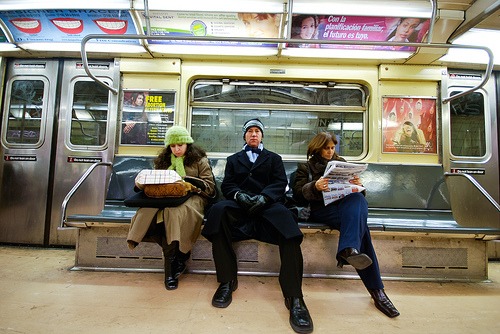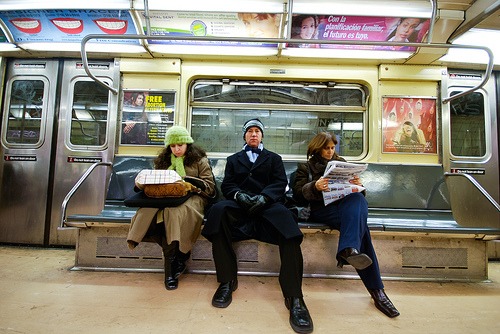 New Yorkers on the evening commute.Photo: Mo RizaQuick: Who are the loneliest commuters in the nation? That would be the residents of Southgate, Mich., where 91.6 percent of workers drive alone.
New Yorkers on the evening commute.Photo: Mo RizaQuick: Who are the loneliest commuters in the nation? That would be the residents of Southgate, Mich., where 91.6 percent of workers drive alone.
The city with the most pedestrian commuters? That’s Ithaca, N.Y., where 41.8 percent of commuters walk to work (particularly impressive given upstate New York’s brutal winters). Meanwhile, no one in Sun City, Calif., apparently walks to work. (Not too surprising, as the Southern California suburb is a master-planned retirement community.)
Those are some of the thousands of data points on Americans transportation habits mined by FindTheBest, which might described as the mother of all comparison search engines, offering information on everything from summer camps to venture capital firms. The service was started by Kevin O’Connor, a cofounder of internet ad agency DoubleClick, now owned by Google.
But I’ve been geeking out over the “Modes of Transportation to Work” category. According to FindTheBest, the data comes from a United States Census Bureau 2008 report.
“All the information we use is publicly available and highly transparent, but the problem is the government does not make the data very easy to navigate or good for comparing,” Brandon Coakley, a business development associate for FindTheBest, told me in an email.
(No kidding — I tried accessing the same information on the Census Bureau site but didn’t have several hours to kill.)
What FindTheBest does best is allow you to quickly and easily call up data on the worker population of cities and how many people commute by car, public transportation, bicycle, or on foot, as well as the number that work at home.
Beyond giving you fun tidbits for cocktail party chatter (did you know that 48.5 percent of workers in Fort Bragg, N.C., work from home?), the database could prove useful for metropolitan and regional planners — not to mention companies that offer car sharing and other service.
The data also punctures some deeply held beliefs about West Coast greenness, at least when it comes to transportation.
No shock that New York City is No. 1 for workers who commute on public transportation. But can you believe that only 12.2 percent of Portland, Ore., slackers take public transportation when they’re working? And only 4.9 percent of Portlanders workers walk to work, while 61.5 percent drive alone? Oh, Portlandia.
That’s barely better than Los Angeles. You might think that nobody walks in L.A., but 3.5 percent of people hoof it to their workplaces and 11.2 percent take public transportation (yes, there is public transport in L.A.).
But some stereotypes hold true. The No. 1 place for commuting by bike (the category also includes by taxi or motorcycle): Isla Vista, Calif., home to the University of California, Santa Barbara, where nearly a quarter of workers ride to work. Key West, Fla., is No. 2 and the university towns of Davis, Calif., Santa Cruz, Calif., and Boulder, Colo., appear in the top 10.
But two industrial New Jersey burgs, Passaic and Elizabeth, beat out the nutty crunchy college towns to take the No. 3 and 4 slots.




